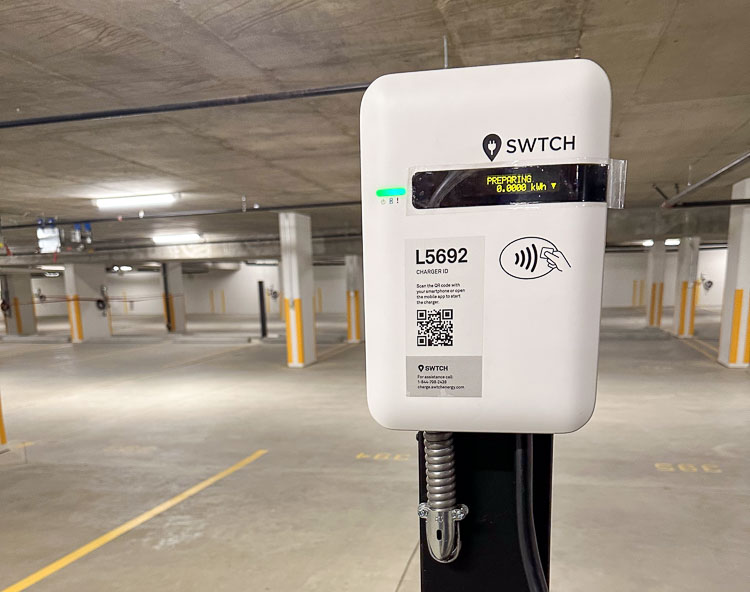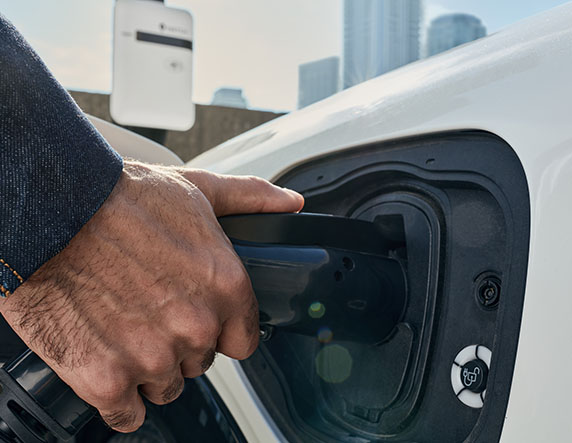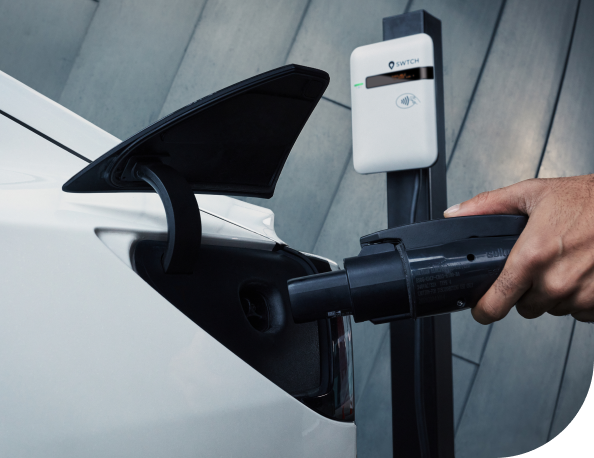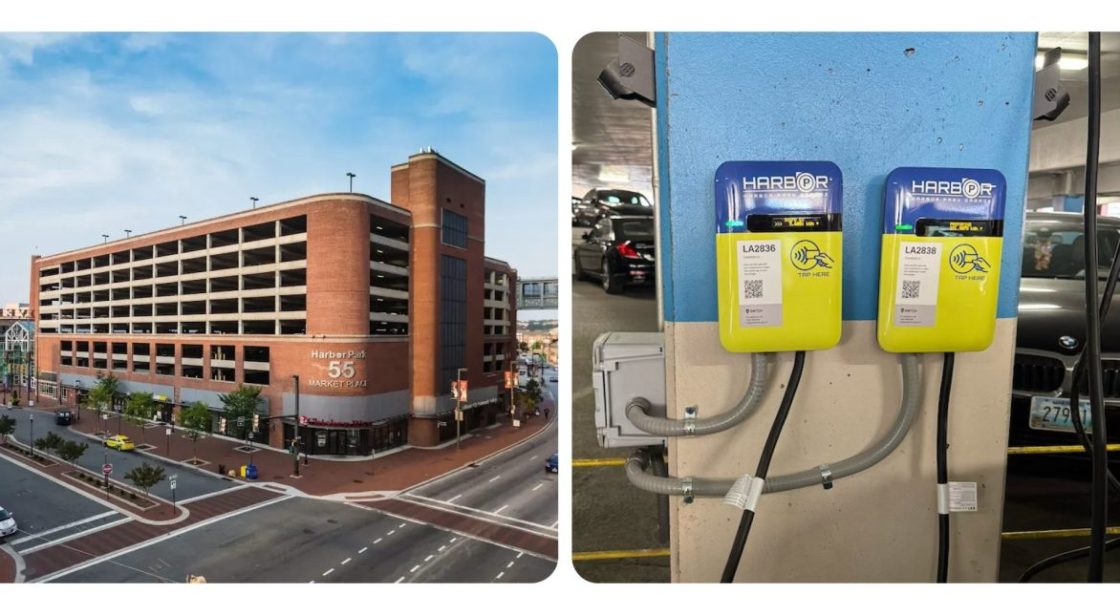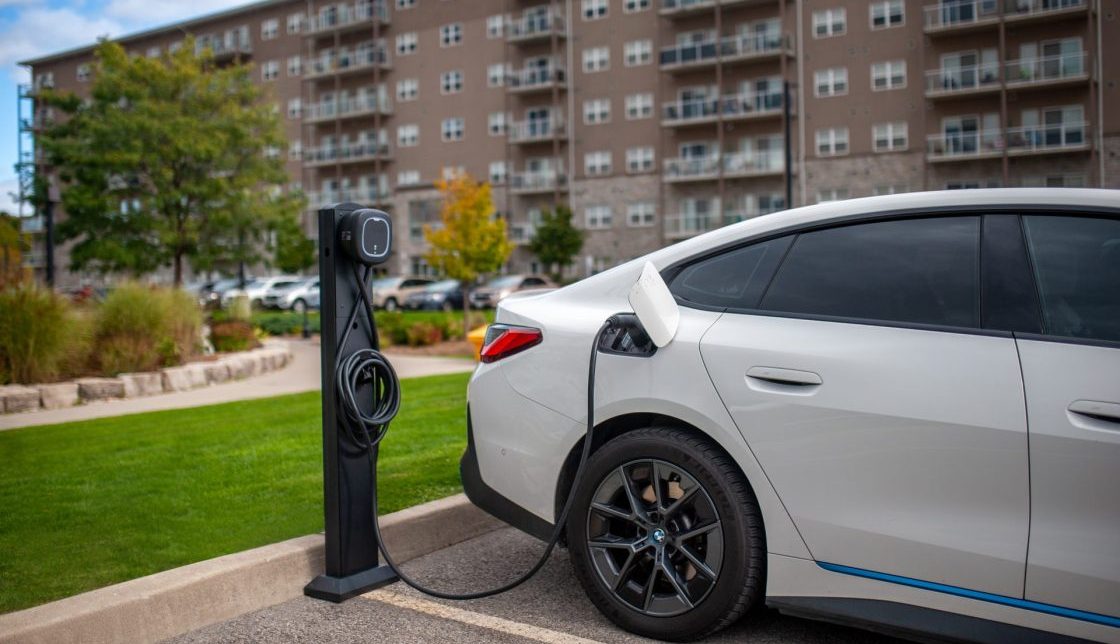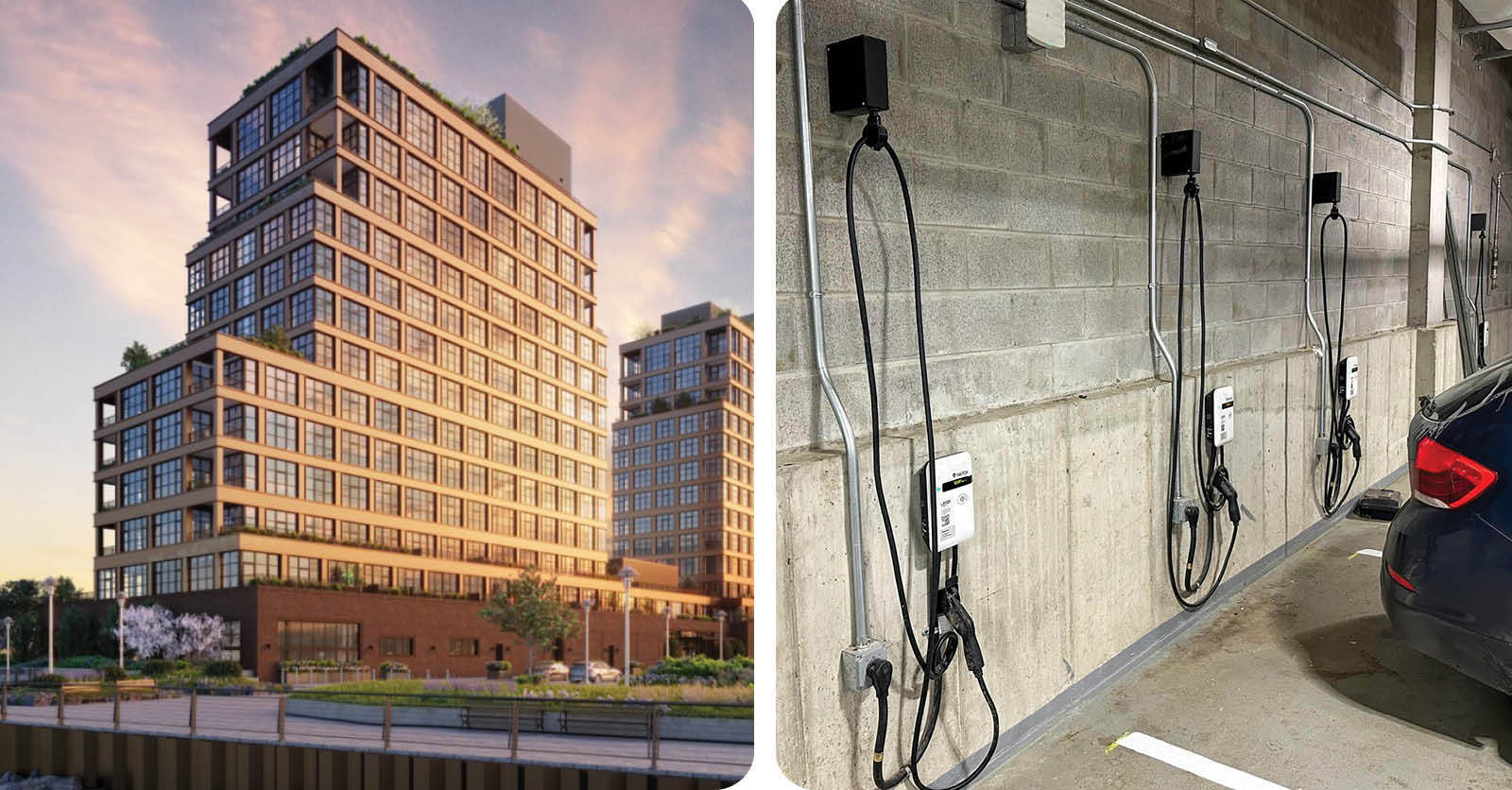ASPAC and SWTCH Partner to save $1000 Per Parking Spot in 574-Unit EV-Ready Multifamily Project
ASPAC Developments used SWTCH’s networked charging solution with intelligent load management to make their 459-unit condominium EV-ready, reducing electrical costs substantially in the process.
ASPAC Developments’ Hollybridge at River Green project launched its three-building condominium complex with a total of 574 parking stalls for residents and visitors and saved $1,000 in installation costs on every single one.
The installation is a great example of how developers can meet growing interest and demand from North American jurisdictions that are either mandating EV readiness or offering incentives to get chargers in place. It also demonstrates the important role that cities play in championing smart load management strategies that reduce the load for which building electrical systems must be constructed, encouraging developers to seek out solutions to comply.
Under a local bylaw that the City of Richmond in British Columbia adopted in 2017, every residential stall in a multi-family development must be EV-ready, with access to a 208-volt power supply that can assure a minimum 12-kilowatt-hour charge per vehicle over an eight-hour period. It prioritized two strategies for compliance, dedicated circuits and EV energy management systems, the latter of which costs less to install.
When Senior Project Manager, Jim Twining, looked into the options, it would cost roughly $2,000 to wire each stall with 400-amp service versus $1,500 per stall for smart panels. Or, if ASPAC went with a networked EV charging system with advanced load management, it’d cost $1,000 per stall.
That’s when the company realized it wasn’t just looking for an EV charger supplier. It needed an EV charging provider with a strong load management solution that would optimize the system from the start, while giving the strata council (condos in British Columbia are called stratas) maximum flexibility to change charging hardware or software providers if it chose to over the longer haul, which is what they found in SWTCH.
At the beginning of this journey, we were talking to companies that just wanted to sell us chargers. But that wasn’t the business we realized we were in. We needed something that would set the strata council up for success.
A RFP Revealed the Optimal Solution Mix
“At the beginning of this journey, we were talking to companies that just wanted to sell us chargers,” Twining said. “But that wasn’t the business we realized we were in. We needed something that would set the strata council up for success.”
In determining the right EV charging provider for the property, ASPAC issued an RFP to identify the solutions available to them. Five companies submitted bids, and Twining concluded that SWTCH had the right mix – providing unparalleled flexibility, charger management, and intelligence in its load management solution, SWTCH Control.
“We selected SWTCH as our Electric Vehicle (EV) load management partner based on their comprehensive open protocol service, technical proficiency, and local presence. Key factors in our decision included contract jurisdiction, domestic data storage, and responsive local support.” Twining said. “SWTCH’s ownership of their software, as opposed to relying on a third-party platform, was crucial for efficient troubleshooting and code adjustments. In the end, we found that SWTCH offered the optimal value to end users.”
In the end, ASPAC roughed in electricity to all 574 parking stalls. Using SWTCH Control, they were able to share each 40-amp circuit between four parking stalls.
With the dollars saved on EV infrastructure, the price was right when the company offered to install EV chargers in unit owners’ deeded parking spots: out of 459 units in the building, 152 ordered chargers for a $2,000 all-in price that included a 40-amp Level 2 EV charger and the electrician’s cost to install it. The savings from government incentives, applied for through SWTCH, were also passed along to homeowners as a $1,000 promotion on the first 26 chargers.
“There were definitely people signing up to secure at-home charging so they could go electric for their next vehicle,” Twining said.
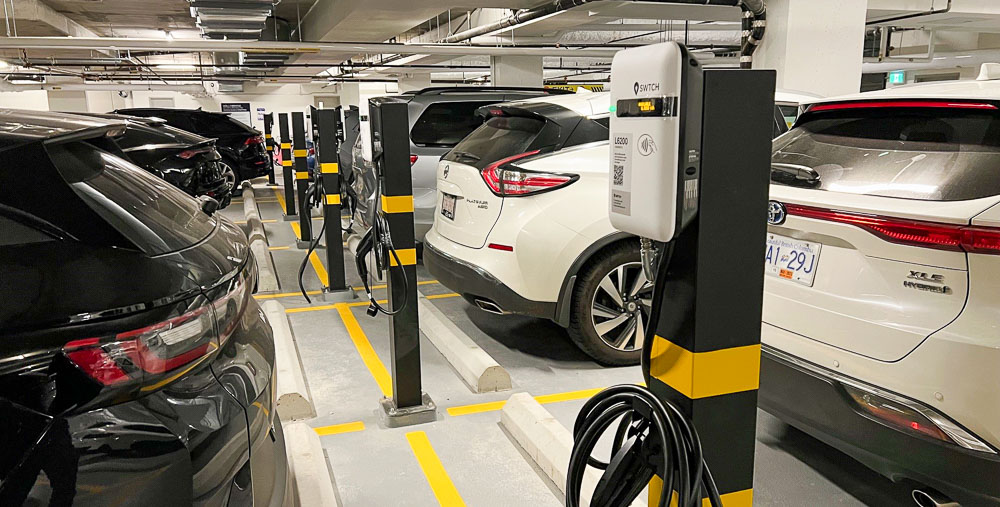
Networked Chargers Equipped with Load Management Provides Ultimate Control of Costs and Revenues
By opting for a networked charging solution with advanced load management capabilities, ASPAC opened the door for the strata council to strategically manage power demand to avoid peak power charges and consider participating in their utility’s demand response programs to generate additional revenue. At Hollybridge, Twining explained, the chargers are all connected to a single master meter, so the system risks incurring surcharges that wouldn’t apply if their utility (BC Hydro) were looking at the whole building holistically. The load management software minimizes that risk by capping demand during peak hours and distributing the available power across any vehicles that are using the system.
Three Recommendations for Multifamily Buildings, both new and old
With EV charging in multifamily buildings moving swiftly from the margins to the mainstream, and municipalities quickly jumping onboard, Twining listed a few factors for developers to keep in mind based on his experience at Hollybridge:
- The goal of the project is to install a complete, optimized system, not a collection of individual chargers.
- The system should set the condo/strata board and end users up for long-term success by ensuring that the charging software and hardware are Open Charge Point Protocol (OCPP)-compliant, so that they aren’t locked in if things go awry.
- A simple, intuitive user experience solution should make it easy for EV drivers (be they residents or guests) to pay for charging, while allowing strata or condo councils to work with the charging provider to set rates, understand usage, and collect revenues.
Find a Partner that Can Walk Alongside
Working with SWTCH also brought home the importance of building a relationship with a reliable EV charging provider. “People said we would need to troubleshoot, and throughout the process, we touched base with SWTCH a number of times and had several meetings onsite,” Twining recalled. “It was important to have someone locally who could answer our questions and help us out.”
If you’re looking for a partner to help you traverse the complexities of managing bylaw regulations, unique electrical capacity demands, and ensure your system is taken care of 24/7/365, get in touch today.
